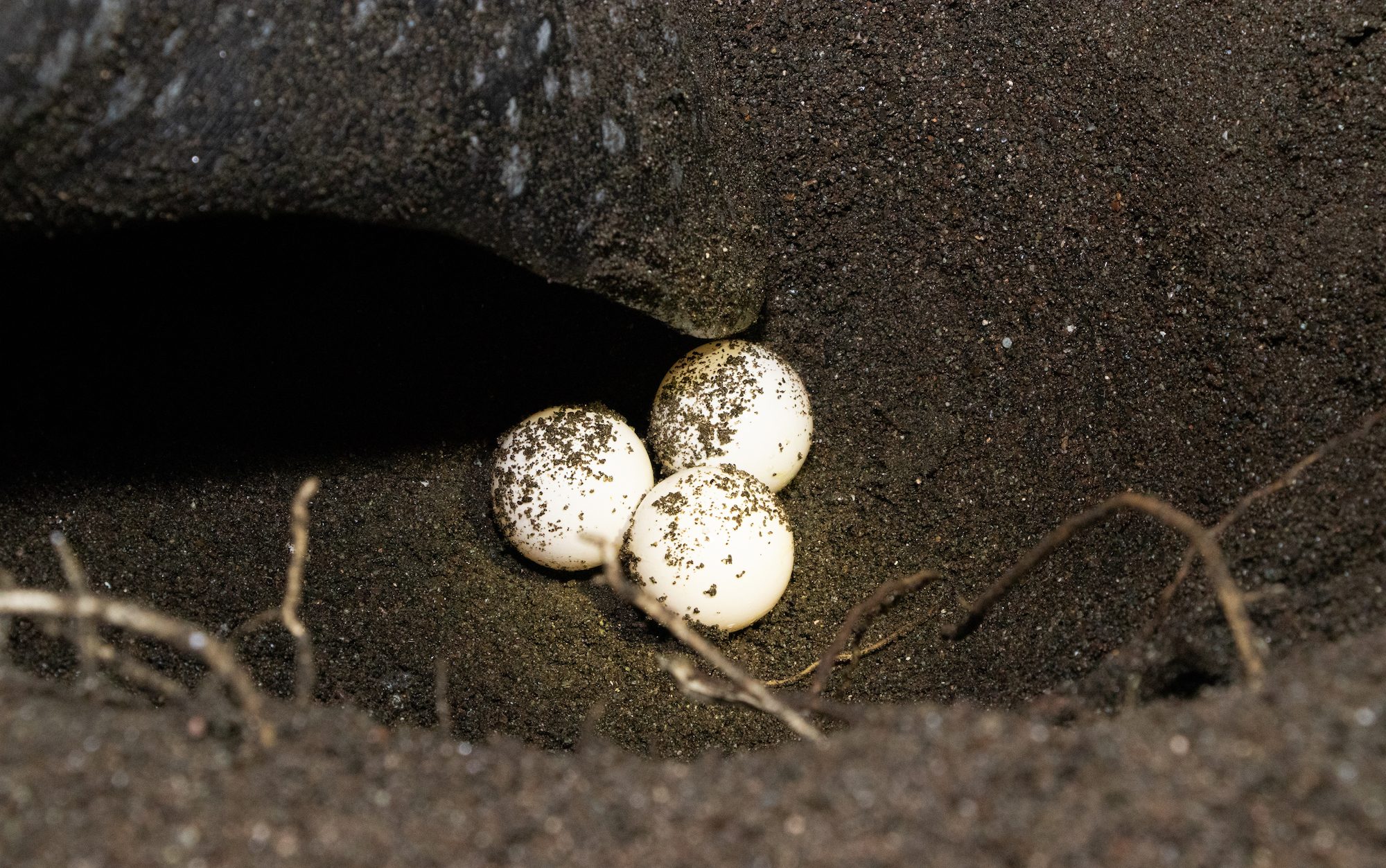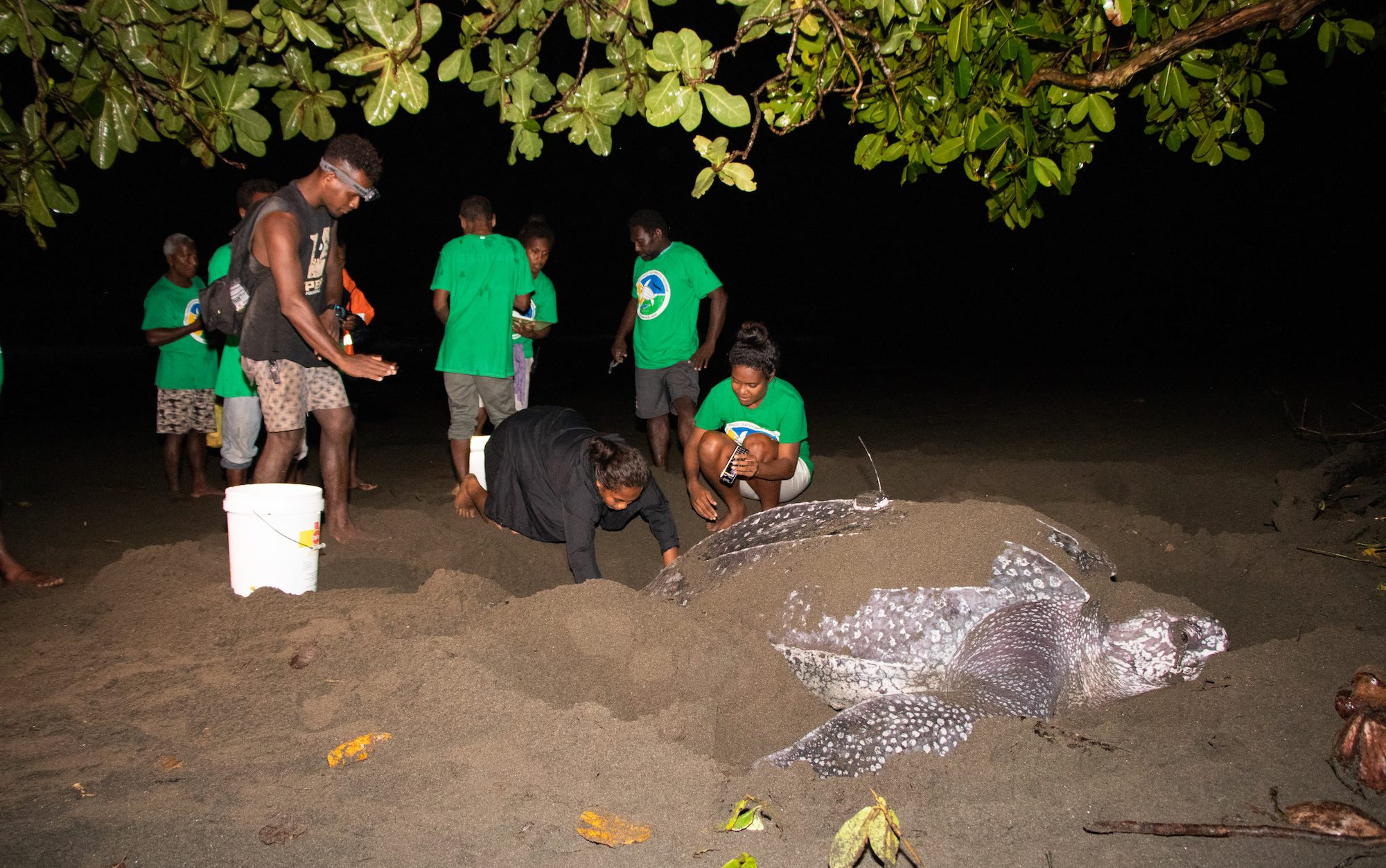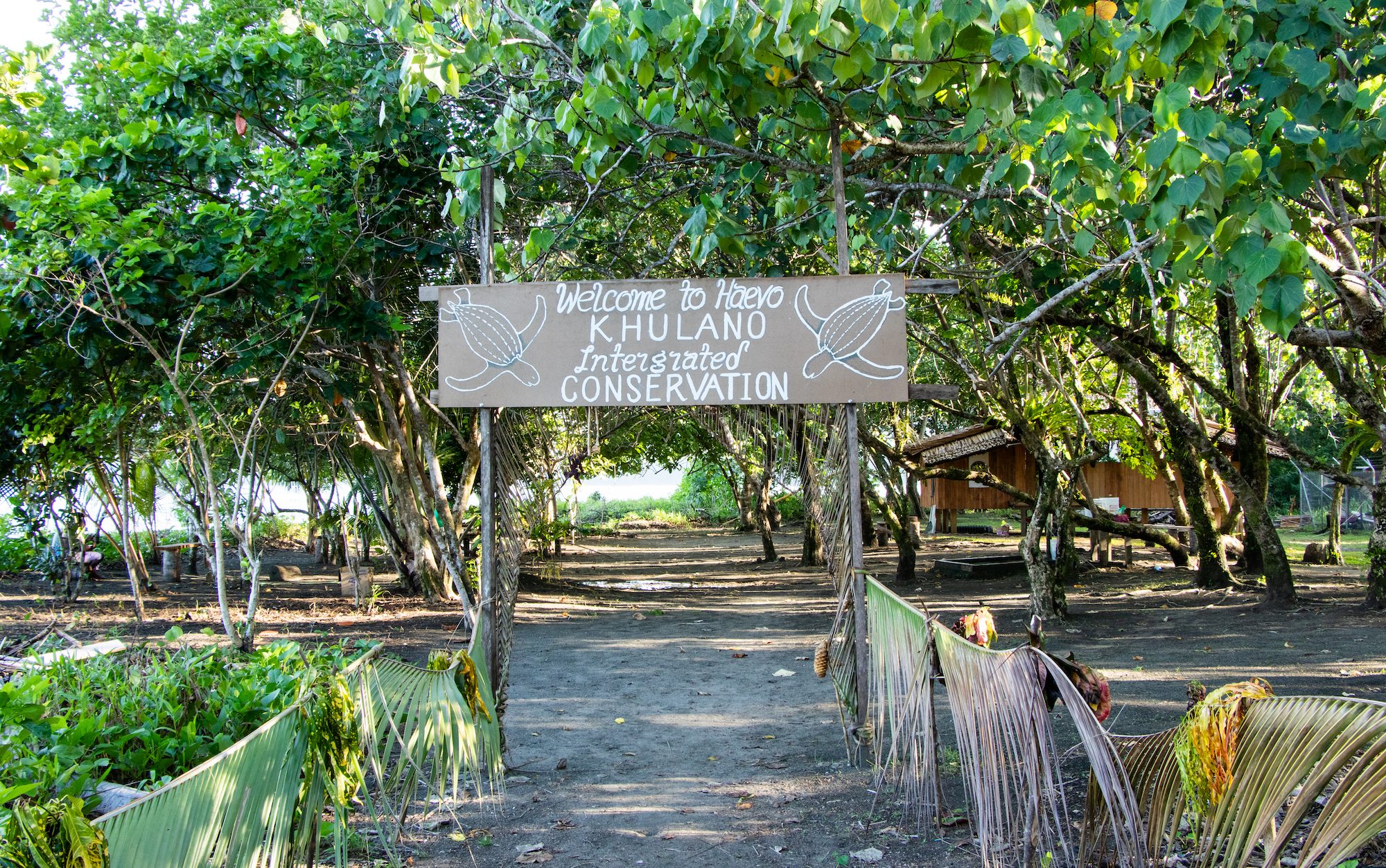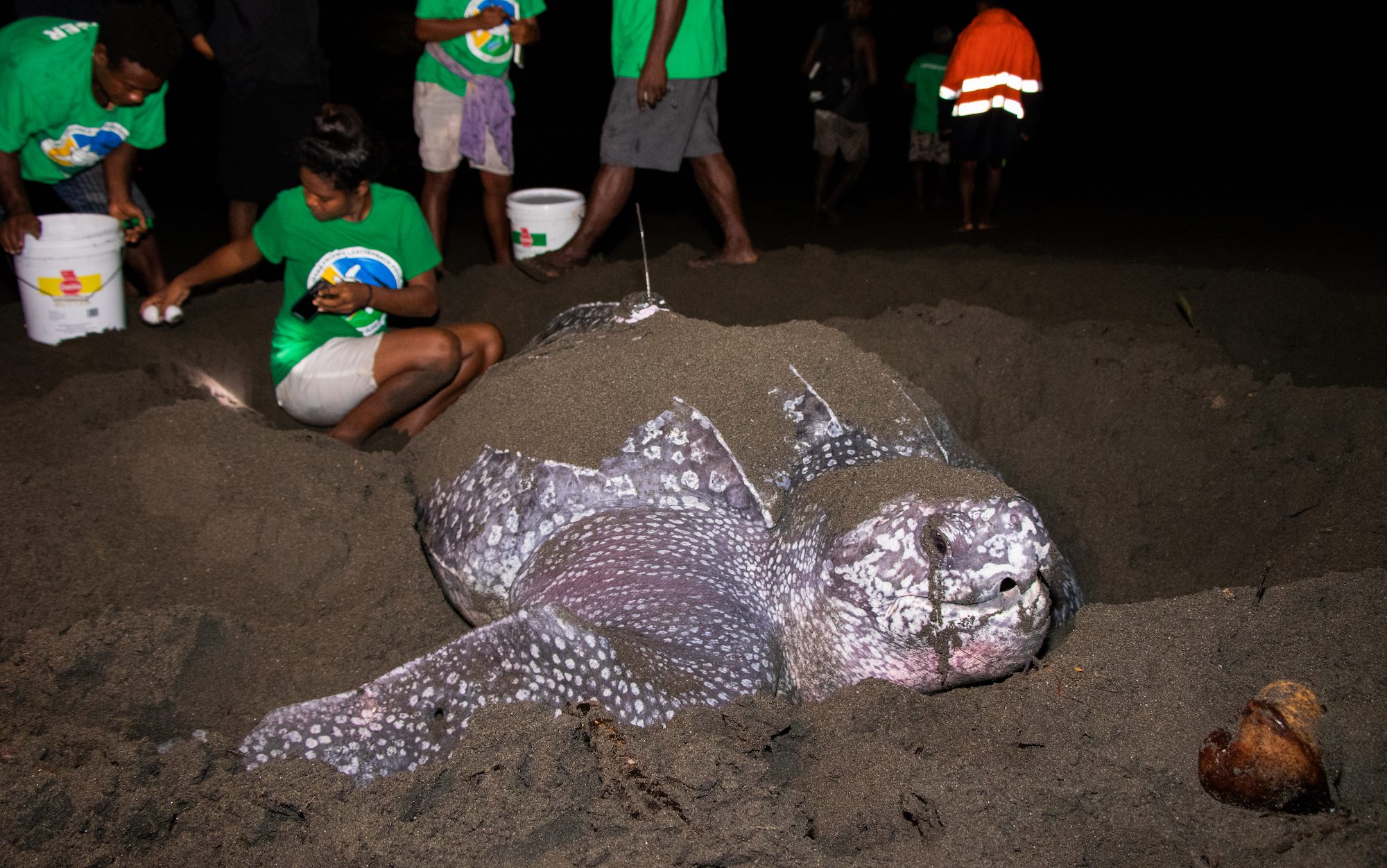In the conservation world, much is made over exciting new scientific advances. NGOs pride themselves on being science-based, journalists write about new technologies that could help pull an endangered species back from the brink of extinction.
I should know. I’ve spent my entire career writing about conservation science. But the more time I spend on the ground — boots dirty, sweating, bitten by mosquitoes — the more I realize that we’re forgetting the most important part of the story.
Conservation takes a village. Not the theoretical “village,” but a literal village. In the majority of places where conservationists work, our success or failure rides on the backs of the people who live there.
We need the other elements, too. We need the practical, applied science that helps us make decisions on how to best restore this forest, or site that solar field. We need financing from donors and foundations, support from policy-makers, and all the rest.
But without the village, it all falls apart.
The Case of Sasakolo
In 2006, The Nature Conservancy (TNC) started a leatherback conservation program in the Solomon Islands. We partnered with the US National Oceanic and Atmospheric Administration (NOAA) to protect Sasakolo, the largest known nesting beach for the critically endangered Western Pacific leatherbacks in the country. NOAA ran a research project to satellite tag some of the nesting leatherbacks, after which TNC established a protected area and monitoring program.
Four years later, the project fell apart.
Community members saw an influx of western scientists, flush with expensive technology and other resources. Several clans with customary access rights to Sasakolo felt that the conservation work wasn’t benefiting them, and disagreement spread within the communities. Richard Hamilton, TNC’s Director for Melanesia, recalled how TNC received a letter from several village leaders saying that the conservation work could continue only if the organization built them a school and an airport, in addition to the boat and ranger station we had provided.
“There just wasn’t enough ground-work done ahead of time to make sure everyone that had a stake in Sasakolo was on board prior to the science going ahead,” says Hamilton. “What resulted was a lot of misunderstanding over what conservation could — and couldn’t — offer to the community.”
The project stalled, and a critical nesting beach went unprotected.
It’s a hard reminder that proper community consultation is critical to conservation success. Stakeholder engagement and consultations, meetings and memorandums of understanding — they don’t make for scintillating storytelling. But it’s this groundwork that makes or breaks a conservation project. That decides the fate of an endangered species.

Unable to move forward at Sasakolo, TNC re-directed their efforts to Haevo, another nesting beach on the southeastern side of Isabel Province. “At the time, we didn’t think Haevo was as significant of a nesting beach, but we figured it was better to do something rather than nothing,” says Hamilton.
And Haevo had something that Sasakolo didn’t: united community support for conservation.
Learning from past mistakes, TNC’s Solomon Islands team spent more time consulting with the community, making sure to clearly articulate what conservation could, and couldn’t offer them.
A decade later, the leatherback work at Haevo is already showing signs of success. The conservation work recently expanded to include a new satellite tagging study, and some of the Solomon Island’s first female conservation rangers started work last year.
“We’re seeing quite a remarkable increase in nests over the last seven or eight years,” says Hamilton, “which is almost definitely due to the conservation efforts.” The rapid increase is likely due to female turtles returning to nest multiple times within a season, rather than being killed for food. It’s a reason for optimism, but Hamilton cautions that genuine population recovery will require ongoing conservation over decades, not years.

Listening to What People Value
I visited Haevo in December 2022 to help with the satellite tagging program. I spent 10 days in the community, speaking with many of the rangers as we patrolled the beach for turtles or relaxed back at the ranger station after a long night of work.
In each and every conversation, pride showed through. Pride in their jobs as rangers, pride for the part they were playing protecting this culturally important species, and pride for the international recognition that conservation brought their community. But equally weighted alongside that pride was the appreciation and value of economic opportunity.
Most of the employment opportunities in the Solomon Islands are based in the country’s capital, Honiara, about a 10-hour boat journey from Haevo. People living in rural communities often have no way to make an income, or their only choice is to work for a foreign-owned logging company.

By providing livelihoods linked to leatherback survival, the monitoring program incentivizes communities to view leatherbacks as an economic asset. And it was clear from my conversations with the rangers that they value the ability to build their skills, and to make an income, just as much as they value their role in protecting an endangered species.
Western conservation values aren’t superior to what local communities care about. Turtles are a culturally important animal to Solomon Islanders, woven through their history and kastom. But they’re also protein.
Prior to starting work as a ranger, all of the men and women I spoke with ate turtle meat. Visitors to Buala, the provincial capital, can order fried turtle at the local fish and chips shop. And even in Australia, shoppers could find canned turtle meat on the supermarket shelves right up into the 1960s.
If economic incentives are what motivate a community to protect an endangered species, then that’s fine. Long-term success depends on listening to what communities value, and building that into a conservation program.

Conservation Takes Time
As we face compounding, interlinked, global crises — extinction, climate, ecosystem collapse — there’s an understandable urge to “go to scale.” To take something, anything, that works and do more of it, everywhere, as fast as possible. Especially in incredibly biodiverse places like Melanesia.
But science, and experience, show that it often doesn’t work.
Researchers modeling the uptake of conservation initiatives over time found that the majority (82 percent) start off slow, taking several decades to reach an inflection point where their adoption accelerates rapidly.
You can’t move quickly when you need the village behind you. No amount of funding will allow TNC to start conservation programs at every known leatherback beach in the blink of an eye, because we know from experience it will backfire.
And policy interventions, so helpful at going to scale in developed nations, won’t get you far in places where policy is rarely enforced. Leatherbacks are a protected species in the Solomon Islands, but few people outside of the government fisheries department know, or care.
A lack of rapid growth isn’t a sign of failure — it’s the norm for conservation initiatives. More often than not, you really do have to turn up in every village to get the job done. And organizations need to be prepared to wait years, maybe even decades, before an initiative will accelerate to scale.
That’s certainly true in the Solomon Islands. TNC’s leatherback work at Sasakolo and Haevo is modeled off of work in the Arnavon Islands, where TNC partnered with local communities to protect a critical rookery for hawksbill sea turtles. After 30 years of work, hawksbill nesting numbers more than doubled, and the Arnavons was recently named the first marine national park in the country.
That kind of long-term commitment isn’t easy to sustain, but it’s what local communities want: a proven commitment to stay the course. Building relationships — and trust — takes time. And it’s only with that trust, nurtured over decades, that conservation interventions will last.

Eleven years later, conservation work is once again underway at Sasakolo.
After several years of groundwork, and better community consultation, both male and female rangers are hard at work protecting the local population of nesting leatherbacks. As we start anew, constant communication with the community reinforces our relationship: through meetings, and signed agreements, and a lot of listening.
Science makes for a great story. But science alone won’t solve a conservation problem. To save the Western Pacific leatherbacks, we need sincere collaboration with communities.
In this case, conservation can only happen one conversation at a time.
